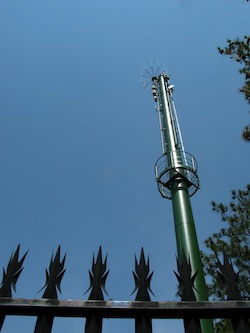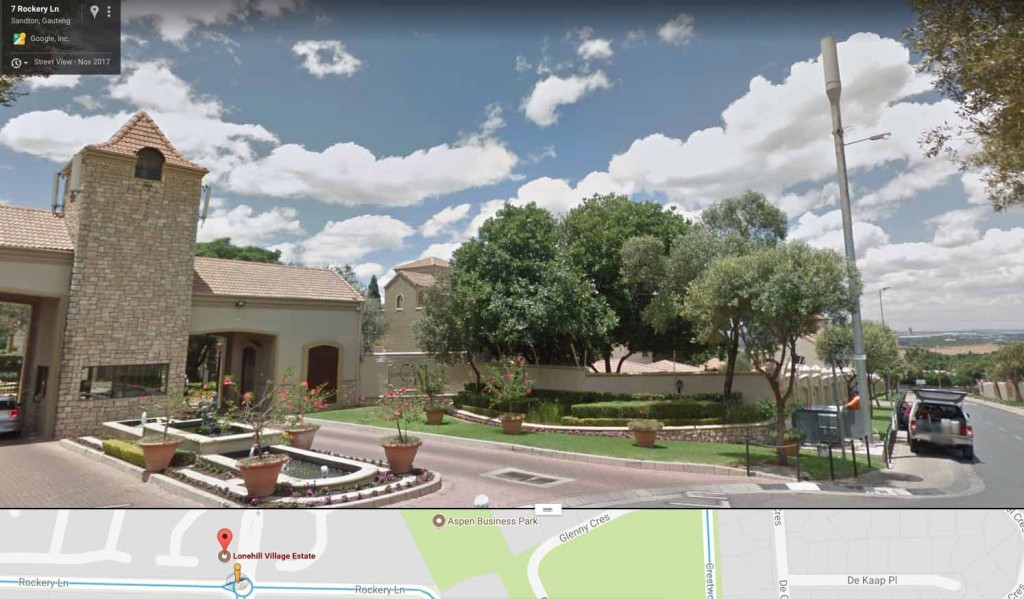Wireless broadband provider iBurst believes it has definitive proof that a base station it operates in Fourways, north of Johannesburg, is not to blame for health problems afflicting some of the residents there.
Residents of the Fourways community of Craigavon have threatened to take iBurst to court to have the base station removed, alleging that radiation from the tower has made them ill. They also claim that iBurst did not follow the correct procedures in erecting the base station. (See “Furious Fourways residents head to court over iBurst tower“.)
Now, iBurst CEO Jannie van Zyl (pictured) says the company had quietly switched off the Craigavon base station. “During the period all these health complaints were made, the tower was never actually switched on,” he says.
Van Zyl also refutes claims that iBurst did not follow the necessary environmental approval process.
He says that during a meeting with residents on 16 November 2009 — six weeks after the tower was switched off — the residents again claimed that their ongoing health problems were caused by the tower.
“A number of residents and/or their staff confirmed that they were still experiencing symptoms such as rashes, headaches, and the like, and that these symptoms disappear when they leave the vicinity of the tower,” Van Zyl says.
“Residents quoted periods of hours, or, at most, two days to see an improvement in the symptoms experienced. One lady who showed us a rash claimed that when she went home for the weekend, the rash disappeared. Another said headaches disappeared when she went home at night.
“However, at that point, the tower had already been switched off for many weeks,” Van Zyl says.
“It became apparent that the tower could, in no way, be the cause of the symptoms, as it was already switched off for many weeks. Yet the residents still saw symptoms that came and went according to their proximity to the area.
“Whatever caused their symptoms, it was now a fact that it could not be the iBurst tower.”
The base station was switched back on in the second week of December, Van Zyl says.
Craigavon resident Tracey-Lee Dorny, whose house is next to the iBurst tower and who has been spearheading the drive to have the tower removed, was not immediately available for comment.
Dorny told TechCentral previously that at least 40 people had developed symptoms she believed could be ascribed directly to electromagnetic radiation from the tower. — Duncan McLeod, TechCentral
https://techcentral.co.za/new-twist-in-iburst-tower-battle/12192/
Furious Fourways residents head to court over iBurst tower

Wireless broadband operator iBurst and a community in Fourways, north of Johannesburg, are at loggerheads over the construction of a base station that some residents of the neighbourhood claim is resulting in serious health problems.
The tower, at Fourways Memorial in the small suburb of Craigavon, was switched on on 12 August 2009. Since then, residents who live close to the iBurst facility have reported skin rashes, headaches, vomiting, sleep disorders, fatigue, upset stomachs, tinnitus and other health conditions.
A residents’ group has claimed that the problems are directly related to electromagnetic radiation.
Now the residents have hired a team of lawyers and are headed to court in an attempt to have the tower removed.
Carte Blanche, a popular weekend television magazine programme, is also expected to highlight the situation on its show, probably this Sunday.
iBurst CEO Jannie van Zyl has ordered that the tower be turned off for two weeks in an attempt to prove to residents that their health problems are not related to electromagnetic radiation from the base station.
But Karl Muller, an interested party who claims that wireless networks are harmful to people’s health, says iBurst’s approach is not helpful.
“The supreme law of this land is the constitution, and the bill of rights gives us the right not to be used in experiments without our informed consent,” Muller says.
“Van Zyl is basically proposing an entirely uncontrolled experiment … without any medical input or supervision. It’s outrageous, a genuine violation of people’s rights, and I’ve strongly suggested to the residents that they should not engage in any debate along these lines with iBurst.”
In addition to the health problems, residents claim that iBurst didn’t strictly follow the environmental approval process before erecting the base station, a claim that Van Zyl firmly rejects.
Some residents want the tower removed because it is an eyesore and has reduced property values in the area, Van Zyl says. He believes aesthetic objections, not health concerns, are the main reason for the residents’ complaints.
He says he doesn’t doubt the sincerity of the residents, but believes any health problems are unrelated.
But Craigavon resident Tracey-Lee Dorny says at least 40 people have symptoms she believes can be ascribed directly to electromagnetic radiation. She says pets have also been affected, with some animals having developed skin rashes.
Now the community is planning to take iBurst to court in a class-action lawsuit. It is also lodging a complaint against the company with the provincial government, alleging that procedures weren’t followed.
Dorny says the community wasn’t properly notified of iBurst’s plans. She says entire housing complexes in the area were not told in advance about the tower’s construction. She also says the community was not given sufficient time to comment on and object to an amended plan.
Jannie van Zyl
But Van Zyl says that the Gauteng department of agriculture, conservation & environment approved the tower’s construction following a rigorous approval process.
He says all residents within 100m of the base station were informed of the plans before construction began, as required when lodging an application with the provincial government. Notices about the planned construction were also published in newspapers.
Though iBurst received more than half a dozen objections from residents — most of them health related — iBurst says it’s unusual for it to receive as few objections as it did in the case of the Craigavon tower.
Van Zyl says the approvals process is complex — residents have to be notified and objections collated, among other things — and was started more than two years ago. iBurst received approval to build the tower in October 2008.
Though a few complaints had been lodged prior to the construction of the tower, Van Zyl says the bulk of objections flooded in only after the tower was built.
But many residents claim they had not been notified about iBurst’s plans. Van Zyl says every effort was taken to ensure all residents received notice of the company’s plans — including hand-delivered letters and registered letters sent via post.
Van Zyl says iBurst was only granted the go-ahead to build the Craigavon mast after it agreed to reduce the tower’s height from the 35m proposed initially to 25m.
It also agreed to build it among trees at the Fourways Memorial and to paint it green to minimise its visual impact.
But the community claims it wasn’t given time to object to the amended plan.

The Craigavon iBurst tower
The Craigavon tower is the fourth base station that iBurst has constructed in the Fourways area. Van Zyl says it was essential that the company expand its coverage in the area to cater for fast-growing demand. iBurst operates about 265 base stations countrywide.
“We are not going to build a tower simply to annoy people,” Van Zyl says. “This was the result of a two-year process.”
Already strained relations between iBurst and the residents broke down this week. In a letter from Dorny, copied to TechCentral, Van Zyl accuses the residents of abusing a “spirit of co-operation” he says he had tried to foster. “Your continuous attempts to sensationalise this whole process smacks of no intent (sic) to resolve this amicably.”
Van Zyl says iBurst switched off the tower on Monday, 16 November, but Dorny and other residents are up in arms, claiming the tower is still active. Though the broadband access component of the tower has been disabled, Dorny says the microwave backhaul links — these allow towers to carry data to each other via line of sight — remain operational.
“It was agreed that every single thing would be switched off on the tower,” Dorny says. “We wanted total transparency and honesty. We are trying to work with [iBurst]. We tried to delay any form of legal action until this was resolved.”
However, in his letter to Dorny, Van Zyl says iBurst will henceforth treat the matter at a “proper scientific level” only.
“You will see from any test results that no radiation is coming from the tower. That is factual information and is in stark contrast to the anecdotal stories you have offered as proof up to now,” he writes.
“I therefore require that you provide iBurst with medical proof that the tower did indeed cause the symptoms you claim, failing which it will be turned back on again.” — Duncan McLeod, TechCentral
https://techcentral.co.za/furious-fourways-residents-head-to-court-over-iburst-tower/11396/

